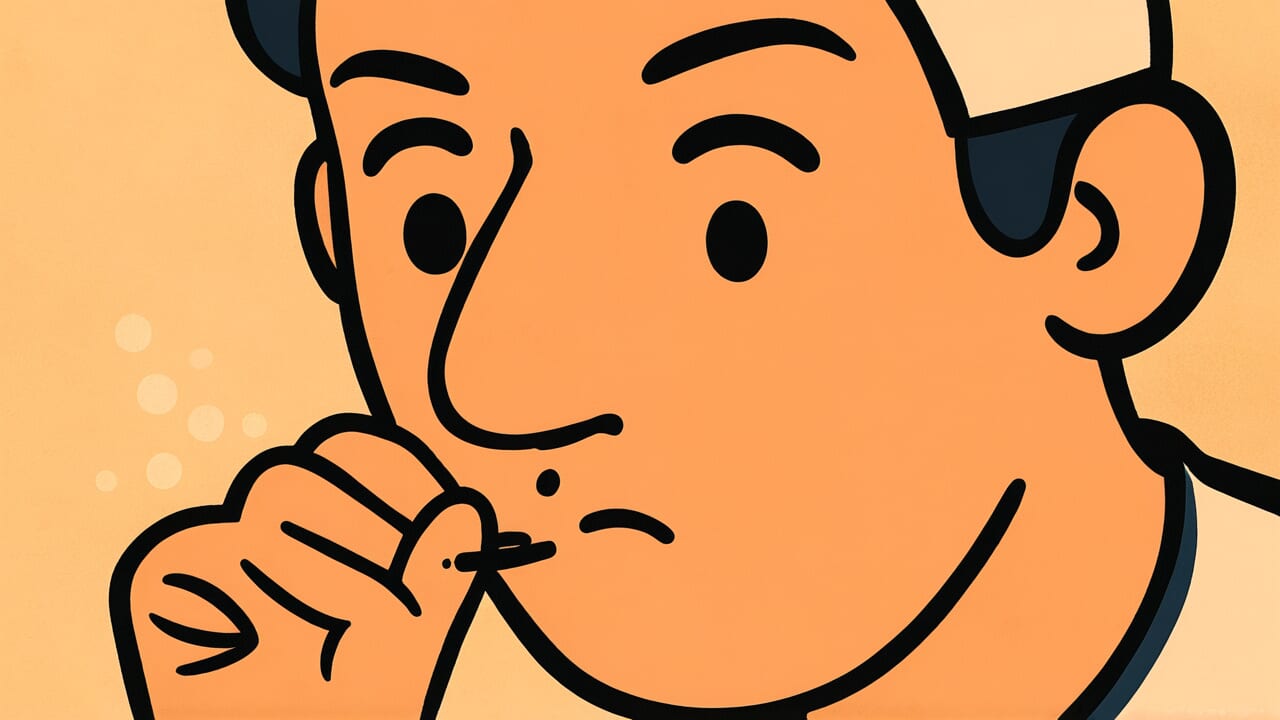How to Read “A wart on the tip of the nose”
Hana no saki no ibo ibo
Meaning of “A wart on the tip of the nose”
“A wart on the tip of the nose” is a proverb that describes obvious flaws or problems that everyone can see. Like a wart on the tip of your nose that’s visible to everyone, it refers to defects or issues that can’t be hidden no matter how hard you try.
This proverb is mainly used when someone’s flaws or problems are extremely noticeable. The person might not realize it themselves, but it’s crystal clear to everyone around them.
It’s also used to point out obvious problems within organizations or plans.
Even today, this expression means “a flaw that anyone can see.” It effectively describes problems so obvious that trying to hide them is pointless, or defects so prominent that no one can ignore them.
In business settings, it’s sometimes used to point out critical weaknesses in projects or urgent issues that need improvement.
Origin and Etymology
There don’t seem to be clear written records about the origin of this proverb. However, we can make interesting observations from how the phrase is constructed.
Let’s focus on the expression “tip of the nose.” Among facial features, the nose sticks out the most. The tip of the nose is hard for you to see yourself, yet it’s the most visible part to others.
This is where the cleverness of this proverb lies.
The word “wart” is repeated for emphasis. A wart is a small bump on the skin that has been recognized as a cosmetic flaw. Warts on the face were often mentioned as “unsightly” in Edo period writings.
When these two elements combine, they create the meaning “a flaw obvious to everyone.” A wart in a conspicuous place like the tip of your nose. There couldn’t be a more obvious defect than this.
Japanese people have long had a culture of conveying messages through visual imagery rather than direct expression. This proverb is thought to have emerged from such expressive wisdom.
Metaphors using body parts had the advantage of being easy for anyone to understand and remember.
Usage Examples
- The flaw in his plan is like a wart on the tip of the nose – everyone notices it except him, yet he remains completely confident
- That company’s accounting fraud was a wart on the tip of the nose, yet management ignored it for years
Universal Wisdom
The proverb “A wart on the tip of the nose” reveals an interesting blind spot in human perception. It’s a paradox: the most obvious flaws are often the hardest for the person involved to see.
Why does this happen? It’s because humans find it difficult to view themselves objectively. The tip of your nose is physically hard to see, but this is also metaphorically true.
The problems closest to us are the ones we can’t recognize.
This proverb has been passed down through generations because it perfectly captures this universal human trait. In every era and every society, people have overlooked obvious problems.
Mistakes by those in power, organizational corruption, personal flaws. These are clear to everyone around, yet only the person involved doesn’t notice. Or chooses not to notice.
Thinking deeper, this proverb also contains the wisdom of “the importance of others’ perspectives.” What you can’t see, others can. That’s why you need to humbly listen to others’ opinions.
Our ancestors understood that humans are creatures prone to self-righteousness. They warned of this danger through visual imagery. This wisdom remains necessary for us today.
When AI Hears This
The human visual system has an interesting characteristic. Objects within 30 centimeters of your eyes are classified as “self-territory” by the brain’s attention system.
In other words, a wart on the tip of your nose is literally part of your face, so your brain judges it as “not an external object that needs monitoring.”
Cognitive science experiments show that visual salience, or “how noticeable something is,” changes with distance. Specifically, if defect detection rate for objects at arm’s length (about 60 centimeters) is 100, it drops to about 40 percent within 30 centimeters.
This is the result of evolution optimizing our ability to quickly spot distant lions or enemies, which was crucial for survival, rather than noticing small changes up close.
Even more interesting is research showing that different brain regions activate when looking at your own face versus someone else’s face. When viewing your own face, you use “confirmation mode” rather than “evaluation mode,” so critical analysis automatically turns off.
That’s why you’re surprised at the hair salon: “My hair was this damaged?” The physical distance of a third-person perspective switches the brain’s recognition mode.
This proverb accurately identifies a blind spot in the brain’s attention system.
Lessons for Today
This proverb teaches us the importance of humility and the courage to accept others’ perspectives.
In your work or relationships, do people around you repeatedly make the same observations? That might be “a wart on the tip of the nose.”
It’s an area for improvement that you don’t notice, but is obvious to others.
In modern society, the ability to accept feedback is key to growth. Social media backlash, workplace troubles, relationship breakdowns. Many problems start when people don’t notice their obvious flaws.
That’s why it’s important to regularly reflect on yourself and listen to opinions from people you trust.
Specifically, I recommend taking time once a month to objectively review your actions and decisions. Also, when you hear critical opinions, try accepting them first rather than immediately arguing back.
That attitude will help you grow. No one is perfect. But people who notice their flaws and try to improve will always move forward.



Comments